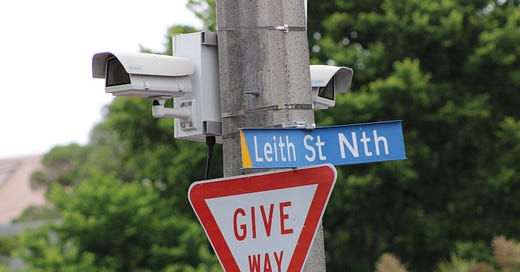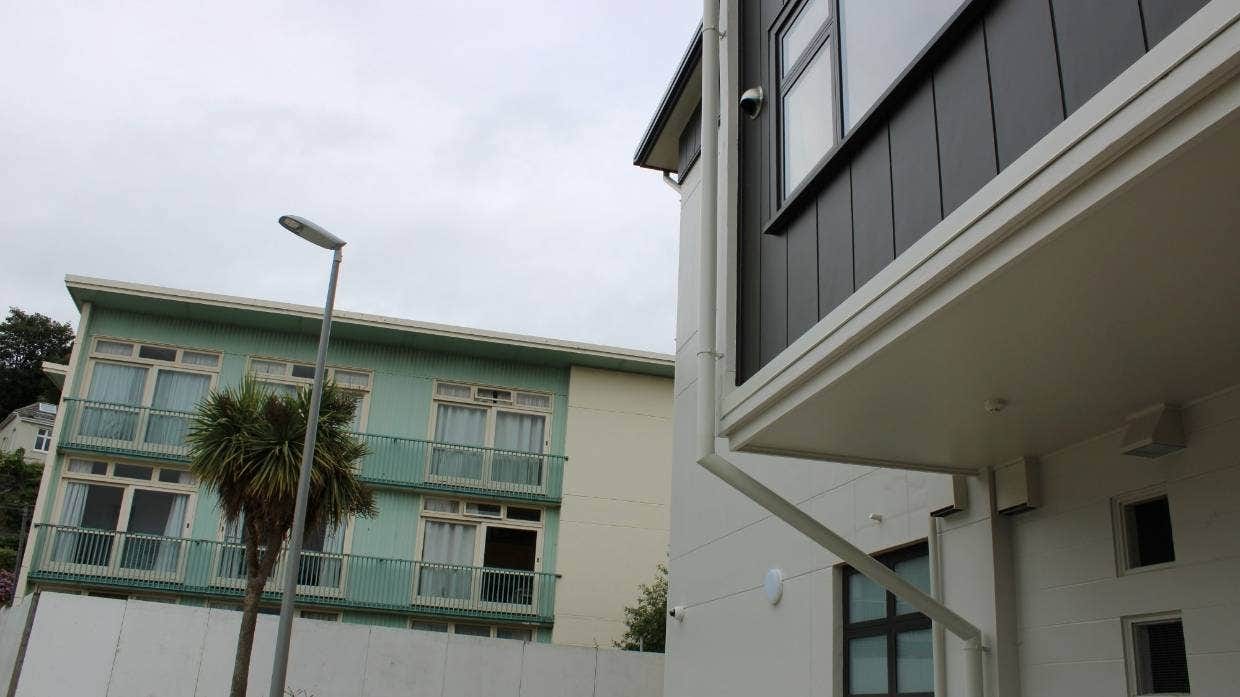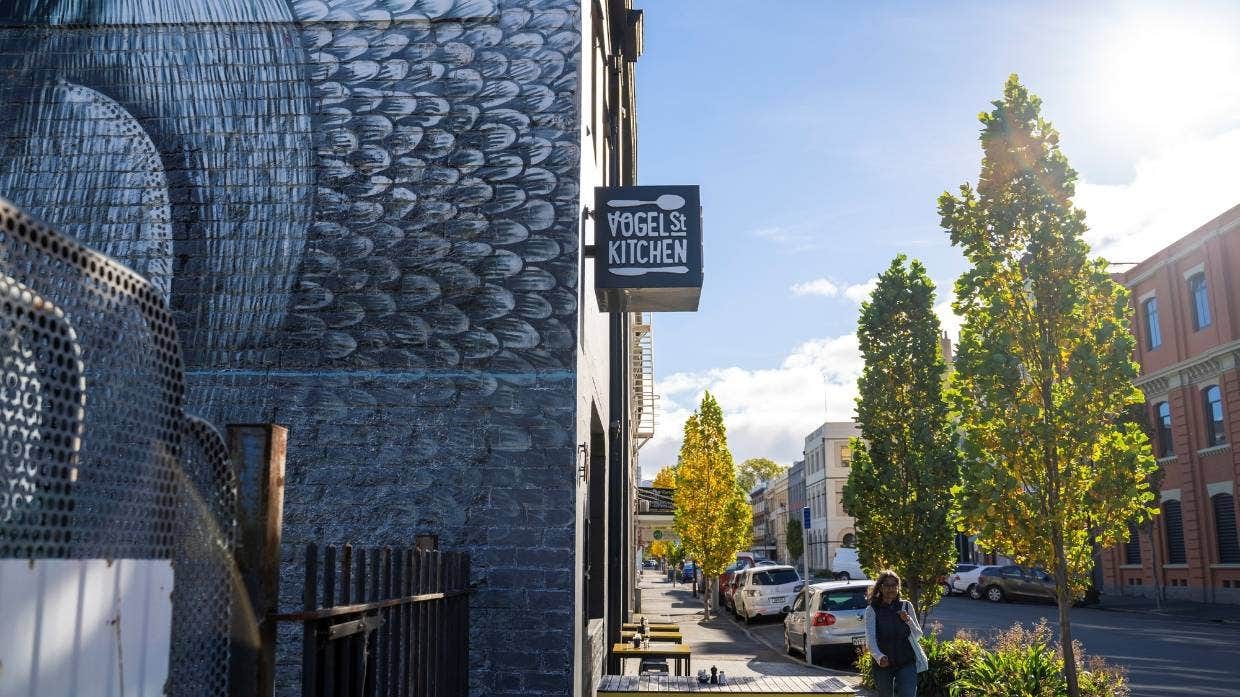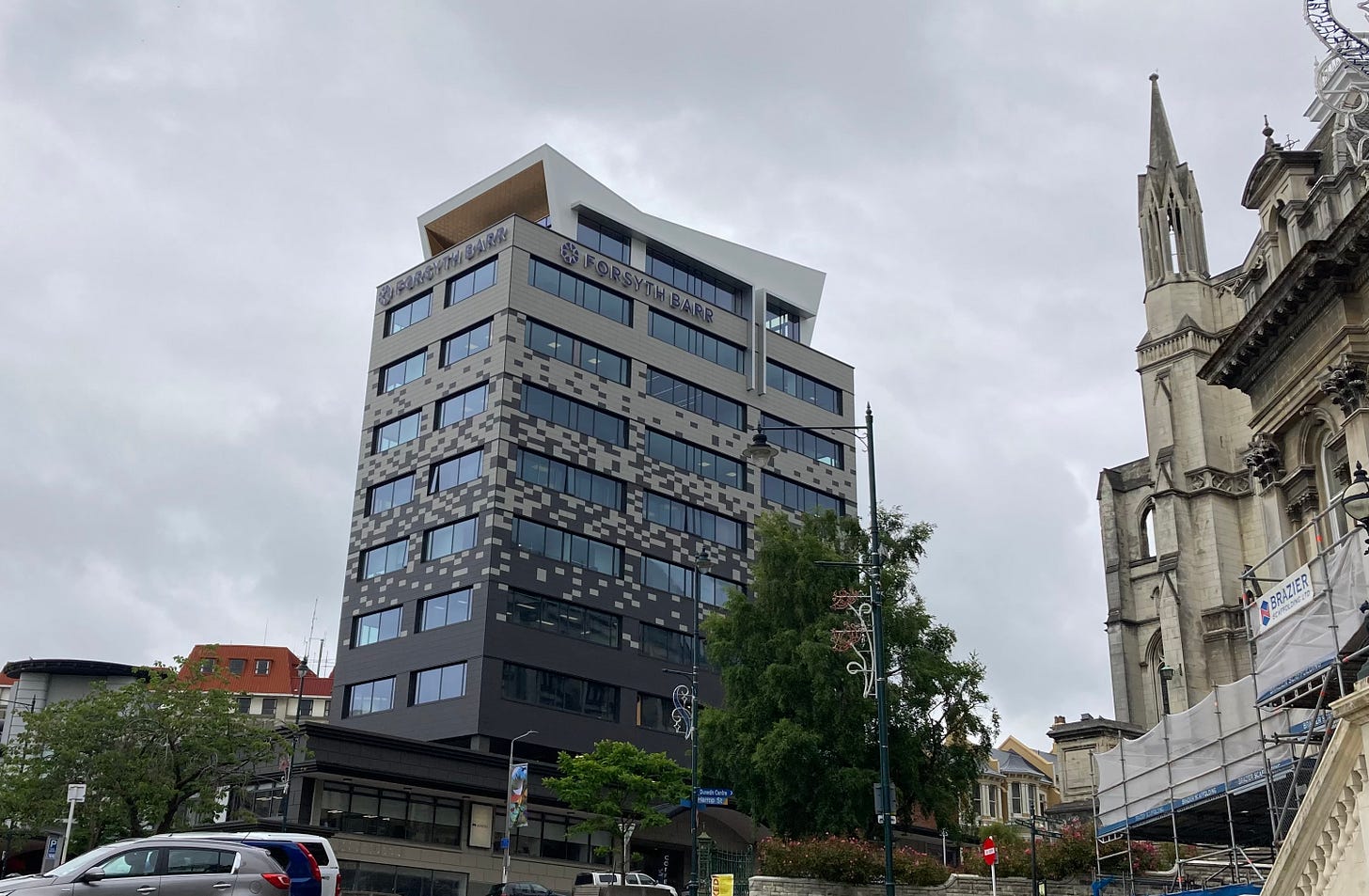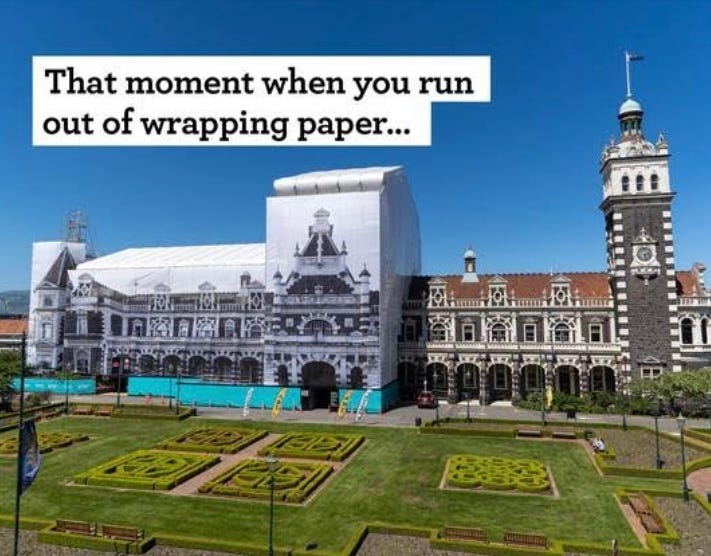A curious case has unfolded in Dunedin’s student quarter, raising concerns about policing in the area.
Perhaps unsurprisingly it started with a couch fire, not on the party street of Castle St North, but on the adjacent Leith St on October 3, about 4.15am.
Three males were reportedly spotted by the burning couch, prompting Campus Watch to attend while firefighters were called.
Police were also called, as the trio fled the scene, but what happened next remains a mystery.
It was understood the three males were collared by police after their location was reported by Campus Watch.
So far so good.
But sources say this is when things went awry. Just over an hour later, the youths were spotted returning to their vehicle.
And unbeknownst to those officers at that time, is that the vehicle may not just contain three young males visiting from Invercargill.
That vehicle possibly contained items allegedly stolen from six residential burglaries in the student area earlier that night. And the location of those six burglaries?
Leith St.
Leith St in the heart of Dunedin’s student quarter. Photo: Hamish McNeilly
So what the hell happened?
I’ve been attending daily weekday police briefings for over a decade. They are bloody useful, although Covid protocols have canned those face-to-face meetings at the moment.
But there was nothing on that particular Monday about a spate of burglaries in the student area.
Following a tip (thankyou!), I filed an Official Information Act (OIA) request to see what police recorded about the incident.
And if you’ve never filed an OIA, give it a go. Basically, it gives anyone access to information held by Government bodies. The word ‘‘access’’ is doing some heavy lifting in that sentence, because information can be withheld.
But in this case I did get a reply from the police - two months after the incident.
And that was that two 17-year-olds had been charged with six burglaries from that night on Leith St - and ‘‘other offences’’.
As that matter was before the courts, police closed the initial OIA request.
Police have been approached for comment.
I also approached the University of Otago Proctor Dave Scott for comment, and was issued with a written statement.
‘‘The Proctor’s Office and Campus Watch share a collaborative relationship with Dunedin police, with the Campus Constable working independently out of the Proctor’s Office.
‘‘All parties work hard to prevent incidents, however where offences occur, we collectively work to identify offenders, hold them to account and - by doing so - help keep the North Dunedin community safe.’’
This week I interviewed a young woman (on another matter), and she told me about her living situation. That included living in a van with her daughter and dogs, and then in emergency housing (a Dunedin motel unit) with the support of the Ministry of Social Development.
It comes as Kāinga Ora has noticeably increased its investment in the city, including the upgrade of its Maitland St properties, purchase of 21 and 23 City Rd and now the purchase of Aaron Lodge Holiday Park in Kaikorai Valley Rd.
The old and the new of the redeveloped Maitland St properties for Kāinga Ora. Photo: Stuff
I filed an OIA on the cost of that City Rd property. Those nine homes were bought for $6,750,000 (including GST), which is “in line with market valuations received and in line with our acquisition policy’’, Rachel Kelly, Kāinga Ora Government relations manager, said.
Contractors had been busy upgrading the building, including making sure it meets the fire code. Tenants were not expected to move in until after 10 January 2022.
Meanwhile in Mosgiel, 17 homes were under construction there.
Expect to see a large growth in Kāinga Ora’s managed Dunedin properties, which was 1376 as of September 30.
As I write this I’m wearing a new t-shirt which simply says:
This t-shirt is possibly wrinkly ‘cos of the Dunedin humidity… Photo: Hamish McNeilly
I’d also like to note that at the time of writing it was warmer in Dunedin, Florida - which was in the grips of a Northern Hemisphere winter - than in Dunedin, New Zealand.
As the grey skies above the city help keep out the sun, I’m reminded of an interesting chat I had a few weeks ago on a topic I know nothing about: colours (my wife alleges I am colour blind).
And it is not a black and white issue or even grey, but is the colour of Dunedin’s central buildings a bit, well, depressing?
Yes, says Ian Butcher, who knows a thing or two about the restoration of heritage buildings
Dunedin was the country’s premier heritage city, but a recent colour trend for some lovingly restored inner city buildings was something completely less colourful.
Some of those buildings, Butcher says, were given poor colour options as those behind the projects tried to reflect Dunedin’s ‘‘stone built heritage’’.
Using paint to imitate the colour of stone was ‘‘extremely difficult’’.
And so a couple of recent extreme makeovers ended with large CBD buildings painted grey, white and black.
A new paint job for this Princes St location. Photo: Hamish McNeilly
‘‘It is just so tiresome, dull and uninteresting.’’
Buildings should reflect a city better, Butcher said.
There were many examples of central city buildings painted in eye-catching and appropriate colours, with Butcher citing Bracken Court, The Terminus and the wider Vogel St area as great examples.
Vogel St features street art and many brightly painted buildings. Photo: DunedinNZ
A heritage city, like Dunedin, needed its buildings to “be colourful, more adventurous, more inspiring . . . something that is a joy to be around’’.
And then there was John Wickliffe House.
The new and the old of John Wickliffe House. Photo: Hamish McNeilly
It had undergone an extensive makeover due to its concrete panels having ‘concrete cancer’; when water enters the precast concrete panel causing issues with the steel inside.
Butcher said the original aggregate panels were very ‘‘subtle’’, and featured a multitude of colours: ‘‘trying to imitate that stone with paint is really, really difficult’’.
That building featured the subtle green of the horizontal aggregate panels counterbalanced by the thin vertical fins by the windows, which were painted white.
But those fins, and the window joinery, were now black and the panels were painted white.
‘‘It is just awful.’’
Dunedin was often ‘‘grey and gloomy’’ in winter, at a time when brighter colours were often appreciated.
But the current trend of painting buildings stark white also backfired on sunny days when they became ‘‘glary’’.
A new paint scheme for the historic Wains Hotel and it’s . . . black and white! Photo: Hamish McNeilly
One possible solution was for the city to employ a colour consultant, Butcher said.
A council spokesman said in developing district plan rules, ‘‘we considered a range of options for managing colour, trying to balance owners’ desires to express their buildings through colour and good architectural and urban design outcomes’’.
Colour preferences were subjective and changed depending on contemporary trends.
And there is this: Photo: Hamish McNeilly
While the use of a colour consultant could be beneficial, it did not guarantee an outcome everyone agrees with.
‘‘As a result, colour is only a consent issue in heritage precincts, where we try to encourage simpler palates and to avoid overly bright colours.’’
Owners in those areas were encouraged to seek advice and meet with council staff to discuss their plans, he said.
‘‘We have a range of acceptable colours we can suggest, to avoid being too prescriptive while protecting heritage values in the precincts.’’
I’m eager to know what you think.
Just don’t ask me as I’m ‘colour blind’.
Meanwhile, council put out a reminder that it was breeding season for the city’s sea lion population.
Restrictions were already in place at Smaills Beach, where up to five female sea lions call home after summer.
Dogs were only allowed on lead at this beach to protect the sea lions.
The expected due date for the first sea lion pups of the summer was around 20 December, with between 15-18 born each of the past three seasons.
A quick bouquet to the designer and brains behind the Dunedin City Council’s electronic Xmas card.
A screenshot of the DCC electronic Xmas card. Photo: DCC
And my Tweet of the Week goes to Mr Crime Writer himself who acknowledges Essie ‘Queen of Romance’ Summers, who had 19 million in sales!


Beautiful.
And here is a (kind of) uplifting track from David Kilgour:

